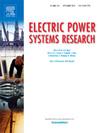直流电压控制环动态对电网跟随变流器暂态同步稳定性的分析与评价
IF 3.3
3区 工程技术
Q2 ENGINEERING, ELECTRICAL & ELECTRONIC
引用次数: 0
摘要
电网跟随电压源变换器的暂态同步稳定性已经得到了广泛的研究,但以往的文献大多只研究了锁相环(PLL)的暂态动力学,而忽略了直流链路电压控制(DVC)环的动力学。当锁相环和DVC的带宽相对接近时,如果忽略DVC环路的瞬态影响,将会得出错误的结论。本文首先考虑了DVC环的暂态动力学特性,采用改进的等面积判据(EAC)分析,揭示了DVC环对暂态同步稳定性的影响。然后,建立了考虑DVC动力学的四阶模型,定量确定了DVC环路的合理带宽范围和阻尼比。此外,还分析了随电网强度变化,DVC对暂态同步稳定性的影响程度。本文章由计算机程序翻译,如有差异,请以英文原文为准。
The analysis and assessment of DC-Link voltage control loop dynamics on the transient synchronization stability of grid-following converters
The transient synchronization stability of grid-following voltage source converters has been extensively investigated, but most of the previous literature has only studied the transient dynamics of the phase-locked loop (PLL) while ignoring the dynamics of the DC-link voltage control (DVC) loop. When the bandwidths of the PLL and DVC are relatively close to each other, erroneous conclusions will be derived if neglecting the transient influence of the DVC loop. This paper first takes into account the transient dynamics of the DVC loop while applying the improved equal-area criterion (EAC) analysis, which reveals how the DVC loop affects the transient synchronization stability. Then, a fourth-order model considering the DVC dynamics is obtained to quantitatively determine a reasonable range of bandwidth and damping ratio for the DVC loop. Moreover, the extent of the influence of DVC on transient synchronization stability with variation of grid strength is analyzed.
求助全文
通过发布文献求助,成功后即可免费获取论文全文。
去求助
来源期刊

Electric Power Systems Research
工程技术-工程:电子与电气
CiteScore
7.50
自引率
17.90%
发文量
963
审稿时长
3.8 months
期刊介绍:
Electric Power Systems Research is an international medium for the publication of original papers concerned with the generation, transmission, distribution and utilization of electrical energy. The journal aims at presenting important results of work in this field, whether in the form of applied research, development of new procedures or components, orginal application of existing knowledge or new designapproaches. The scope of Electric Power Systems Research is broad, encompassing all aspects of electric power systems. The following list of topics is not intended to be exhaustive, but rather to indicate topics that fall within the journal purview.
• Generation techniques ranging from advances in conventional electromechanical methods, through nuclear power generation, to renewable energy generation.
• Transmission, spanning the broad area from UHV (ac and dc) to network operation and protection, line routing and design.
• Substation work: equipment design, protection and control systems.
• Distribution techniques, equipment development, and smart grids.
• The utilization area from energy efficiency to distributed load levelling techniques.
• Systems studies including control techniques, planning, optimization methods, stability, security assessment and insulation coordination.
 求助内容:
求助内容: 应助结果提醒方式:
应助结果提醒方式:


